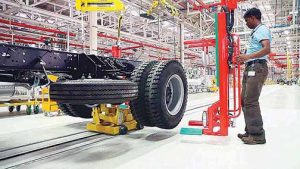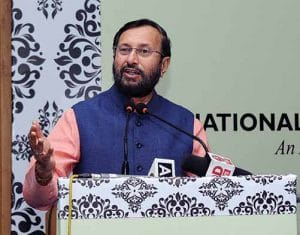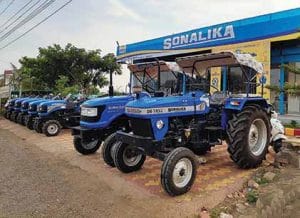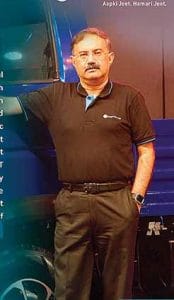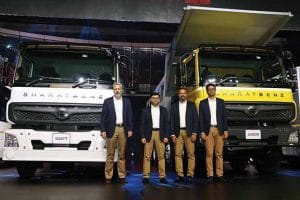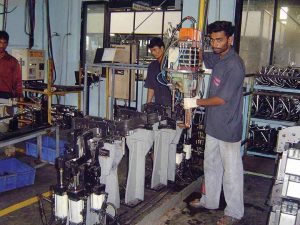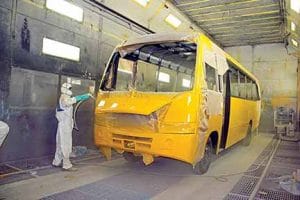Confident of growth returning to the CV industry, factors like ‘Atmanirbhar Bharat’ and the uptick in rural economy are set to play a role.
Story by Bhushan Mhapralkar
A young entrepreneur, Sachin Pawar (name changed on request) operates a micro-unit at Pune’s Bhosari MIDC about a stone’s throw distance from the Tata Motors’ plant. His enterprise makes precision machined parts for various manufacturing industries in the region, including Tier 1 suppliers to the big auto makers in the region. Enjoying a good business outlook until 2018, Pawar is currently finding it tough to keep going. With business down by over 75 per cent of what he used to do until 2018, he is finding the tax compliance burden a tad high since beyond that and the payment of salaries and the fixed overhead costs he is almost left to put money out of his pocket. If he breaks even, he is happy. Clearly remembering that he was contemplating exploring a new business opportunity by buying a mini-truck in 2015, Pawar is currently inding it difficult to even stay afloat. The sudden lockdown, which is termed as the strictest, changed the complete scenario, he said over the phone.
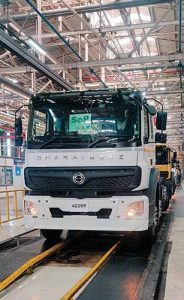 The closure of his unit for two months followed by a local lockdown in the region have taken a toll. The fear of Covid-19 looming yet, Pawar rued that I have seen my business plummet even as the thought of tapping a new business opportunity by purchasing a mini-truck does not go out of my mind. It has been one big downhill journey, he averred. Hoping that the business environment will improve over the mid- to long-term, Pawar is hoping that the Government supports MSMEs like his in a big way. Isn’t ‘Atmanribhar Bharat’ about it, he remarked.
The closure of his unit for two months followed by a local lockdown in the region have taken a toll. The fear of Covid-19 looming yet, Pawar rued that I have seen my business plummet even as the thought of tapping a new business opportunity by purchasing a mini-truck does not go out of my mind. It has been one big downhill journey, he averred. Hoping that the business environment will improve over the mid- to long-term, Pawar is hoping that the Government supports MSMEs like his in a big way. Isn’t ‘Atmanribhar Bharat’ about it, he remarked.
The announcement of the ‘Atmanirbhar Bharat’ initiative has found appeal with India’s MSME sector, which contributes about eight-per cent of the GDP. It has provided them with a hope amid news like the 23.9 per cent GDP drop in the first quarter of FY2020-21. Supplying pump parts to companies like Kirloskar Brothers, Pawar is hopeful of the uptick in the rural economy helping him to sustain the chain of things. Even as he finds new ways to cut costs (he has moved to an accountant who charges less), Pawar is not very happy with the prospect of a significant rise in the cost of doing business. His situation is not very different from the many road transporters out there. It does come as a surprise therefore that a big consolidation drive is currently on in the road transport and the MSME sectors. Many businesses are shutting down and are ceasing to operate. As the Government makes efforts to bring down the freight rates by promoting railways and other means of transport, it is the smaller road transporters that are fast disappearing. They are not finding even footholds to stay in business it seems. If the redefining of the MSME definition by the Government would help, it is a question that small entrepreneurs like Pawar are finding it difficult to get an answer to. It is another initiative that is linked to ‘Atmanirbhar Bharat’, the principals of which many businesses in India are already practising. MSMEs included; road transporters included, and the CV industry included too.
‘Atmanirbhar Bharat’
Announced against the backdrop of an escalating border row with China, ‘Atmanirbhar Bharat’ is structured across five pillars – economy, infrastructure, system, demography and demand. Linking the MSME sector, it has thrown open the prospect for this sector as well as many other businesses having a turnover in the same range (the turnover bracket has also been revised along with redefinition) enabling them to register themselves with the government as a micro, small or medium-scale unit. Thus including small and mid-sized truck and bus operators as well, the redefining of MSME means a transport business thus, with an investment of Rupees-six to Rupees-seven crore, could now register itself as a small-scale unit which in the earlier scenario was termed as a medium-scale unit. A transport business investing around Rupees-one crore and having a turnover of around Rupees-five crore will be called a micro-unit, expressed Vijay Kumar, Director, MSME Development Institute, Ministry Of Micro, Small And Medium Enterprises, Government of India. A (transport) industry with an investment of Rs.10 crore and a turnover of Rs.50 crore will be called as a small scale industry, he added. The one with an investment of Rs.50 crore and a turnover of up to Rs.250 crore will be called as a medium-scale enterprise, he explained.
The change in MSME definition is also said to be linked to the Rs.20 trillion financial package announced by the Government against the background of the pandemic. The Government is also said to be working on yet another stimulus package based on infrastructure, system, demography and demand revival, mentioned a source on the condition of not revealing his identity. Kumar also drew attention to the Government’s evaluation of the auto industry and if it would revive itself by a reduction in GST. It was at the 60th Annual Convention of SIAM in September, that the Union minister of Heavy Industries and Public Enterprises Prakash Javadekar announced, “The Central Government is evaluating the recommendation of the auto industry to reduce GST rates by 10 per cent across all categories of vehicles.” At the same event, Rajan Wadhera, President, SIAM, expressed that steep investments for (implementation of) upcoming regulations and the commensurate revenues have not been realised due to the lack of consumer demand.
Rural economy
The uptick in the rural economy could have a positive effect of reviving the economy. By driving the agricultural supply chain, according to an industry observer, it could also help the CV industry realise growth in the mid- and long-term. Said to support 60 to 70 per cent of the country’s population, rural economy is claimed to account for 46 per cent of the GDP. With nearly 100 million farmers known to have received Rs.40,000 crore as income support through ‘Kisan Samman Nidhi’, the uptick in rural economy is certain to help the CV industry. Mentioned an analyst that he is confident of the uptick in tractor sales spilling over to the CV industry as well. From what we have been seeing, trucks catering to the agriculture sector, especially LCVs and ICVs, will see a faster rebound, he quipped. Mentioned Nitin Seth, COO, Ashok Leyland, that the LCV market is counter cyclical to the M&HCV market. The LCV market is already rebounding, he added. The lighter CV segments are expected to post better gains on the basis of a good rainfall and the on-going efficiency improvements in the agricultural supply chain as compared to the M&HCV segments.
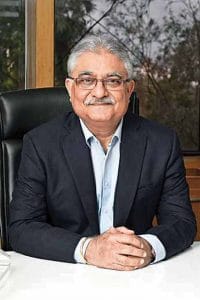 CVs of various types and creeds are expected to gain in the e-commerce space due to significant shift towards online purchasing. Supporting demand for last mile, first mile and express (line-haul) delivery, CVs are helping the e-commerce sector to address supply-side disruptions and large-scale reduction in aggregate demand. Drawing attention to the country’s sizeable young population with access to internet, an analyst mentioned that it is e-commerce that would create a demand for faster, safer, comfortable and reliable vehicles that support lower TCO and faster TurnAround Time (TAT) against the backdrop of initiative like ‘Atmanirbhar Bharat’. As the subtle winds of reverse globalisation amid the US-China trade war blow, it is e-commerce sector that will also support the early arrival of electric CVs, he added. Mentioned Rajaram Krishnamurthy, Vice President Marketing & Sales, Daimler India Commercial Vehicles, that the CV industry growth is being fueled by e-commerce demand, road infrastructure projects and the rejuvenation of the coal sector. “‘Atmanirbhar Bharat’ is one of the initiatives,” he added, “that is also fueling growth.”
CVs of various types and creeds are expected to gain in the e-commerce space due to significant shift towards online purchasing. Supporting demand for last mile, first mile and express (line-haul) delivery, CVs are helping the e-commerce sector to address supply-side disruptions and large-scale reduction in aggregate demand. Drawing attention to the country’s sizeable young population with access to internet, an analyst mentioned that it is e-commerce that would create a demand for faster, safer, comfortable and reliable vehicles that support lower TCO and faster TurnAround Time (TAT) against the backdrop of initiative like ‘Atmanirbhar Bharat’. As the subtle winds of reverse globalisation amid the US-China trade war blow, it is e-commerce sector that will also support the early arrival of electric CVs, he added. Mentioned Rajaram Krishnamurthy, Vice President Marketing & Sales, Daimler India Commercial Vehicles, that the CV industry growth is being fueled by e-commerce demand, road infrastructure projects and the rejuvenation of the coal sector. “‘Atmanirbhar Bharat’ is one of the initiatives,” he added, “that is also fueling growth.”
Mid- and long-term growth prospects
Drawing attention to Delhivery’s purchase of Volvo trucks for its e-commerce and express B2B needs, a Delhi-based analyst said that the promise of higher efficiency and other improvements is helping overcome hurdles like higher initial acquisition costs. It is also shifting focus to lower TCO and faster TAT while also driving the much needed modernisation in the CV industry. Betting big on Government’s ‘Atmanirbhar Bharat’ initiative, Daimler India Commercial Vehicles (DICV), according to Satyakam Arya, its managing director and chief executive officer, is investing in India. The CV maker recently signed a MoU with the Tamil Nadu Government to invest Rs.2,277 crore towards expansion of its Oragadam plant generating another 4000 jobs approximately. Emphasising on higher local content, the CV maker is also driving a programme where its vendors have been supplying parts to Daimler sites the world over. “Growth may have tapered globally, but it is a passing phase,” said an industry observer as he underlined how exports and overseas focus of the CV industry would help it to reap good dividends.
The only marker where Daimler chose to float a dedicated brand in the form of BharatBenz, according to Arya, growth is what they are witnessing as the ‘unlockdown’ starts. “We are witnessing good demand for used BharatBenz trucks immediately after kicking off the used vehicle business,” averred Krishnamurthy. As its fifth-largest market, the Daimler Group is confident of a strong growth of the CV industry in India. In the case of homegrown CV makers, Tata Motors and Ashok Leyland, it is not a different story. As they explore newer markets outside of India, supported by the principals of ‘Atmanirbhar Bharat’, which they have been practising much before the term was coined by Prime Minister Modi, the CV makers are charting out a strong growth strategy as they explore new avenues at home too. Expecting early arrival of electrification, the CV makers are looking at how they could invest further in technology to tide over the forthcoming regulations as well.
Poised to profit from the reduction in GST, the Indian CV makers are pursuing a strategic alternate fuel path to ensure an ability to compete with the best at a cost that is lower than those in the advanced markets. In the case of VE Commercial Vehicles, the company is claimed to take a two-pronged strategy to forward its interests. Practising the ‘Atmanirbhar Bharat’ principals for long, the CV maker has been driving exports to neighbouring countries as well as the African region. It has also gained a foothold in the Middle East and Far East Asian markets. Arrangements like the manufacture of a UD brand of light truck at its Pithampur plant has put it in good stead. Leveraging its relations with Volvo to supply it with BSVI engines out of the VEPT plant at Pithampur, VECV is also making good use of the knowledge of the Swedish Group to expand to new markets as well as target new segments in the domestic market of India. The recent announcement of the merger of Volvo Buses India with Eicher’s bus business speaks highly about how the five pillars of ‘Atmanirbhar Bharat’ are coming to influence businesses.
‘Atmanirbhar Bharat’ for suppliers
Consider the example of Nippon Paints India, which caters to various STUs and CV makers like Ashok Leyland, SML Isuzu, Tata DLT, VECV, Tata Motors, and Daimler India. Suppling paint and refinish solutions to the Indian auto industry, the company, taking to practice the principals of ‘Atmanirbhar Bharat’ for long has come to support Nippon Paint Group AR activities across 32 markets in the Asia-Pacific, the Middle East and African regions, up from 10 market in 2014. Since its establishment in 2011, Nippon Paints India has been combining research and development with in-depth local market understanding to provide end-to-end solutions for virtually all kinds of paint and non-paint needs of car refinishes, commercial vehicles and light industrial coatings segment. Delivering paint solutions that not only enhance the productivity, profitability and efficiency of body shops among others, the company is running a Global Colour Centre at Gurugram, which creates tens of thousands of new colours annually. The paints made at the Bawal plant of Nippon are also supplied to Australia and Nepal as well.
Looking at companies like Nippon Paints India, it is clear that most Indian auto components suppliers are already practising the principals of ‘Atmanirbhar Bharat’ initiative. The industry, which is estimated to be USD 307.7 billion worth, is, according to Deepak Jain, President, Automotive Component Manufacturers Association (ACMA), planning to triple total component exports from India to USD 45 billion over the next five to seven years and secure a four-to-five per cent market share of the global auto components trade. The global auto components trade is estimated to be worth USD 1.3 trillion. In-line with what Jain said, an industry observer mentioned that the Department of Promotion of Industry and Internal Trade (DPIIT) has proposed short-and-long-term measures to turn India into a manufacturing hub for auto components and air conditioning under the ‘Atmanirbhar Bharat’ initiative. One of the key measures, he informed, includes a thrust to empower the Indian auto components sector to target five-per cent of the global auto components trade.
With companies like DICV already hand holding their suppliers to supply to other Daimler sites around the world, the Indian auto suppliers are well-poised to add colour to the prime minister’s ‘Atmanirbhar Bharat’ initiative in a true sense. It is they who would be a key contributor to the mid- and long-term growth of the auto industry in India, said an industry analyst. He also drew attention to the scheme for Promotion of Manufacturing of Electronic Components and Semiconductors (SPECS) under the Ministry of Electronics and Information Technology (MEITY) for automotive electronics and EVs. Stating that the DPIIT has suggested the inclusion of the auto components industry under the Production Linked Incentive (PLI) in the long-term to help them to turn out high advanced components locally and achieve high-value addition capabilities, the analyst stressed that the mid- and long-term growth story of the Indian auto industry is something that will propel it to a grander scale in term of abilities, expertise and technology. A word of caution however, he said, is the need for the Government to hand hold the supplier industry so that it could eliminate gaps in competitiveness, costs, quality, technology and capability. Especially in the area of materials like special auto-grade steels and electronics, he added. The Indian auto industry is said to import roughly USD 2.5 billion worth of electronics and special auto-grade steel every year.



